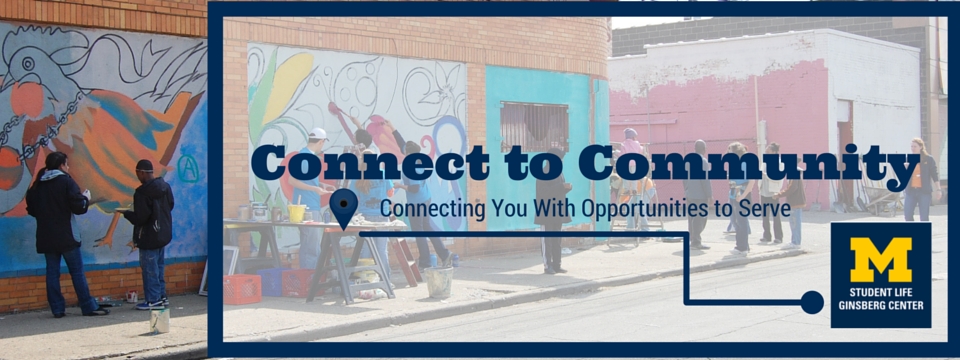Things to Keep in Mind the Day of Volunteering
Here are some things that we suggest you keep in mind the day you volunteer. We know that doing these things can go a long way towards making the experience positive for both your group members and the community partner.
- Be sure you arrive on time. If you are supposed begin volunteering at 11am, you should likely plan to arrive around 10:45am, or earlier. Take into consideration travel time, parking, walking, etc.
- Be sure your group members have water bottles.
- Consider what active engagement looks like - are side conversations appropriate? Has your group talked about when it is and is not appropriate to be on their phones?
Photography
- Be thoughtful about when and where you take photos. Note: It would likely be helpful to talk about this with your group ahead of time! Some great questions to ask yourself are:
- Is this “appropriate”? Does this align with the mission and vision of my group? Of your community partner?
- If I was the person in the photograph, would I like my picture to be shared across the internet with total strangers? Do I have their permission?
- Does the community partner have a photography or social media code of conduct? Don’t know? Ask!
- Who will see this and what am I trying to say to them? What are the different ways people might view this? What will be the impact?
- Is what I am posting humanizing? Does it promote truth and justice or perpetuate stereotypes?
- Note: It is NEVER appropriate to take and post photos of children or of consumers.
- Remember - If you are going to post, it is important to mention the organization along with a link to their website, name the people in the photo, and mention the location. Use the post as an opportunity for others to learn about the social issue!
- Interested in additional resources on this topic? See http://alternativebreaks.org/ethical-volunteer-2/
Reflection
- We highly recommend you spend some time after your volunteer experience reflecting. Reflection is the part of your volunteer work that helps you to make meaning of the experience.
- One great tool for reflection is the “What? So What? Now What” framework
- What?
- What did you do today?
- What happened that stuck out?
- What did you observe
- So What?
- What did you learn?
- How do you feel about what happened today?
- How does what we did contribute to the community partners mission?
- How does what we did contribute to alleviating a larger social issue (i.e. food insecurity)?
- Now What?
- How did today change your thinking on something?
- What is going to change in your life because of the work that you did? (i.e. are you going to commit to producing less food waste)
- What are you going to do in the future that is tied to the social issue that you/we did work around today?
For more support on this (tools for reflection, facilitating reflection, etc.) please set up an advising appointment with Ginsberg Center staff by filling out this support form.
Jump To:
Step 1: How to Find the Experience that’s Right for Your Group
Step 2: Planning With Your Community Partner
Step 3: How to Work With Your Group to Prepare for the Experience


